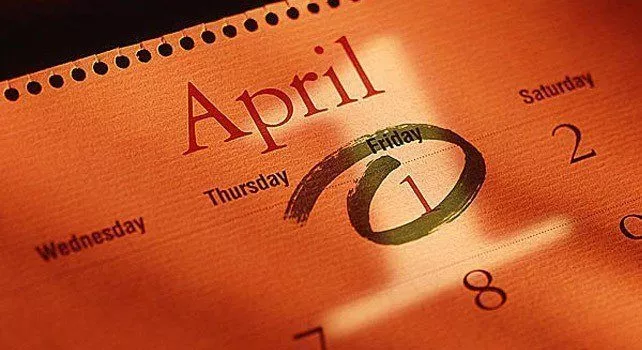April is fast approaching, and that can only mean one thing – April Fools’ Day.
On April 1st of each year, children and adults alike will indulge in practical jokes, knock-knock jokes, and various hoaxes that can fool hundreds of people at a time.
April Fools Day Origins

A Western cultural belief, the tradition of April Fools can date back centuries.
The first recorded date was in the Nun’s Priest Tales in 1392 by Geoffrey Chaucer, the author of The Canterbury Tales.
In the tale, a vain cockerel is tricked by a wily fox, very much like in an Aesops’ fable.
Written in old English, the line says, ‘Syn March was gon.’ This can be translated as ‘Since March was gone.’
This sentence led historians to believe that a special occasion occurs on April 1st, in which others can be tricked.
The public Roman festival Hilaria (which has roots as an early April Fools’ Day) was traditionally held on March 25th.
The day was a celebration in which meats were roasted over open fires, and alcoholic drinks flowed freely.
This was in comparison to the somber days that the Emperor had hosted previously.
The Medieval Festival of Fools was held on December 28th. The tradition died out and was commonly replaced by April’s Fools’.
The Festival of Fools tradition still occurs in Spanish-speaking countries, where the day is devoted to mischief and merriment for all ages.
Old French countries held week-long celebrations that ended on April 1st. These traditions were instead of celebrating New Years Day and making fools of others who did.
How Long does April Fools Day Last?

Traditionally in places such as Australia, Canada, and the United Kingdom, April Fools’ jokes last until midday.
If a joke is played afterward, then they are the April Fool.
The old saying says, ‘April Fools’ Day’s past and gone, You’re the fool for making one.’
However, in countries such as Germany, Japan, and the United States, jokes can last all day.
The Pranks

In 1698, many citizens were told to see the lions bathing at the Tower of London. Of course, when they arrived, there was nothing to be seen. This was one of the most infamous April Fools’ Day jokes.
The traditional April Fools’ Day jokes are slowly dying out. Countries such as France and Italy still hold a tradition that some secondary schools are now embracing.
Children and adults alike stick paper fish to each other’s backs, meaning they are the April’s Fish (the first fish caught in springtime).
It’s not only families and friends that have their fun on April 1st.
Here are just a handful to tide you over until the big day itself:
One newspaper reported that police would hire hawks to carry cameras on motorways to catch speeding motorists.
The Sun newspaper wrote that gypsies had the right to pitch tents in the historic Windsor Castle.
2-Ten FM (the radio station) told listeners that an African elephant was causing major traffic disruptions on the M4.
The famous statue of Hachikō the dog had been stolen from Japan. France was graciously offering to replace it with a statue of a bronze poodle.
To promote BBC iPlayer, the BBC showed ‘video footage’ of penguins able to fly in the Antarctic skies.
BMW cars ‘developed’ a Magnetic Tow Technology. It was able to lock onto the front of your BMW car, and then you would be towed along with no need to have your foot on the accelerator or have a running engine.
An important question is: How many times have you fallen for an April Fools’ joke, and will you fall for one this year?












